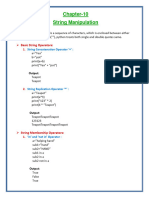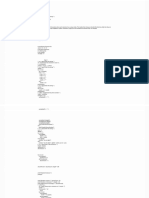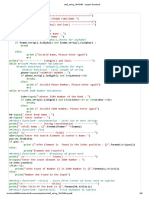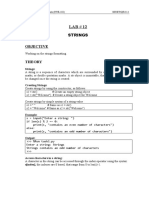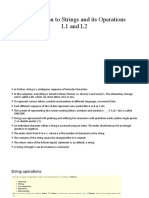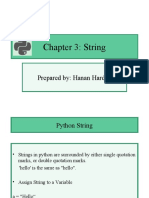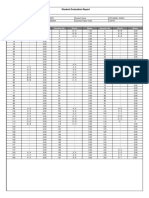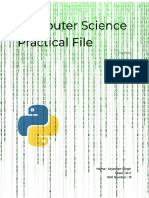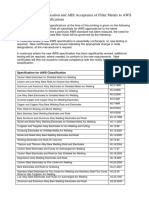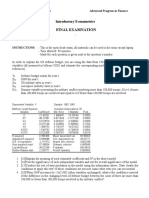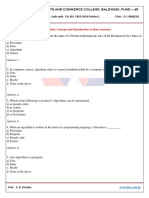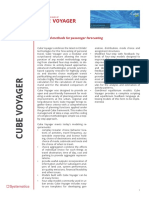0% found this document useful (0 votes)
58 views10 pagesCode2pdf 65ced7de9de3b
The document discusses various operations that can be performed on strings in Python like:
1. Creating strings using single quotes, double quotes and triple quotes. It also shows how to traverse and print characters of a string.
2. Explains that strings are immutable in Python. Various string operators like concatenation, replication, membership, comparison are demonstrated along with examples.
3. Different string methods like capitalize(), upper(), find(), isalpha(), isdigit() etc. are explained with examples. Operations like slicing, splitting, replacing, joining of strings are also covered.
Uploaded by
GenCopyright
© © All Rights Reserved
We take content rights seriously. If you suspect this is your content, claim it here.
Available Formats
Download as PDF, TXT or read online on Scribd
0% found this document useful (0 votes)
58 views10 pagesCode2pdf 65ced7de9de3b
The document discusses various operations that can be performed on strings in Python like:
1. Creating strings using single quotes, double quotes and triple quotes. It also shows how to traverse and print characters of a string.
2. Explains that strings are immutable in Python. Various string operators like concatenation, replication, membership, comparison are demonstrated along with examples.
3. Different string methods like capitalize(), upper(), find(), isalpha(), isdigit() etc. are explained with examples. Operations like slicing, splitting, replacing, joining of strings are also covered.
Uploaded by
GenCopyright
© © All Rights Reserved
We take content rights seriously. If you suspect this is your content, claim it here.
Available Formats
Download as PDF, TXT or read online on Scribd
/ 10

